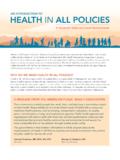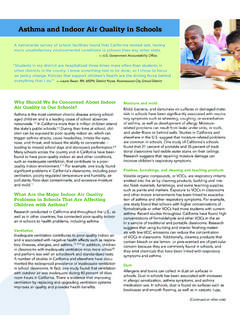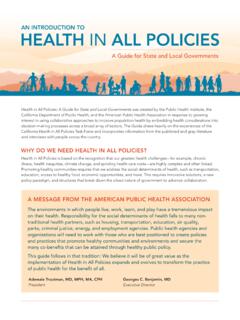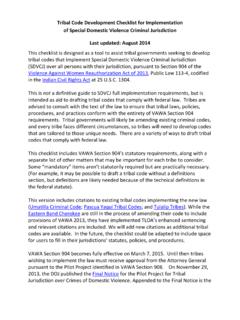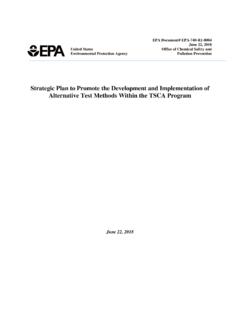Transcription of Best Practices for Community Health Needs …
1 1 Best Practices for Community Health Needs Assessment and implementation Strategy development : A Review of Scientific Methods, Current Practices , and Future PotentialReport of Proceedings from a Public Forum and Interviews of ExpertsPublic Forum convened by The Centers for Disease Control and PreventionAtlanta, Georgia | July 11 13, 2011 Kevin Barnett, DrPH, MCP | February 2012 Best Practices for Community Health Needs Assessment and implementation Strategy development : A Review of Scientific Methods, Current Practices , and Future PotentialReport of Proceedings from a Public Forum and Interviews of Experts Kevin Barnett, DrPH, MCP February 2012 Submitted toThe Centers for Disease Control and Prevention1600 Clifton RoadAtlanta, GA 30333 Submitted byThe Public Health Institute555 12th Street, 10th FloorOakland, CA 94607 Developed withFunding was provided by the Centers for Disease Control and Prevention under cooperative agreement U38HM000520-03h with the National Network of Public Health Institutes.
2 Its contents are solely the responsibility of the authors and do not necessarily represent the official views of the Centers for Disease Control and iEXECUTIVE .. Purpose .. Rationale .. Panel Meeting .. Informant Interviews .. of Kansas Compendium .. of it All Together: A Logic Model .. Health Needs ASSESSMENT .. Ownership of Community Health .. Community Jurisdictional Issues .. Collection and Analysis .. Setting .. STRATEGY development AND and Oversight .. Accountability and Regional Investment and Funding Patterns .. Reporting: Federal, State, and Local / NEXT 120 APPENDIX A BIOGRAPHIES .. iAPPENDIX B. FINAL xiiACKNOWLEDGEMENTSWe gratefully acknowledge our colleagues at the Centers for Disease Control and Prevention(CDC) for the sponsorship and guidance in the project, as well as the hosting of the expert panelmeeting.
3 In particular, we would like to recognize Paul Stange at CDC for his leadership in theengagement of colleagues, collaboration in the conceptualization of the project, assistance inthe identification of leaders in the field, and facilitating the involvement of CDC leadership. Wewould also like to acknowledge CDC staffers Simeon Niles and Paula Staley for theirparticipation in the expert panel meeting planning process, and Tanya Blocker, KimberlyThaxton, Emily Johnston, and Ken Ward for their onsite support during the would also like to acknowledge our colleagues at the National Network of Public HealthInstitute for their effective management and coordination of all logistics associated with theplanning and convening process.
4 NNPHI support was provided under the leadership of ChrisKinabrew, with ongoing support from staff member Anooj important theme in the project is the opportunity for collaboration between hospitals andlocal public Health agencies in conducting Community Health Needs assessments and thedevelopment of Community Health improvement strategies. With this in mind, an openingplenary presentation was given by John Bluford, MBA, FACHE, Chief Executive Officer ofTruman Medical Centers in Kansas City, MO. Mr. Bluford was also the Chair of the Board ofTrustees of the American Hospital Association (AHA). Leaders from Health systems andhospitals such as Aurora Health Care, Baylor Health Care System, Catholic Healthcare West,Duke University Medical Center, Kaiser Permanente, Trinity Health , and UMASS MemorialHealth Care also participated on expert panels.
5 Important input in the planning of the meetingwas also provided by Janelle Gillings from the Association of State and Territorial HealthOfficers (ASTHO) and Julia Joh Elliger and Barbara Laymon from the National Association ofCounty and Community Health Officers (NACCHO). NACCHO also sponsored a national webinarthat provided an opportunity for over 300 public Health leaders to address topics covered in theexpert panel addition, we are grateful for the opportunity to collaborate with colleagues Stephen Fawcett,Christina Holt, and Jerry Schultz of the Work Group for Community Health and development atthe University of Kansas. Dr. Fawcett and his colleagues developed a companion report in theproject entitled Recommended Practices for Enhancing Community Health Improvement, andmade important contributions to the meeting.
6 We would also like to acknowledge thecontributions of Public Health Institute team members Smruti Shah and Reggie Jackson,contributed to the development of content for each element of the Community healthimprovement process addressed as part of this report, and for their support of the would also like to acknowledge the contributions of Keith Hearle, Principal of Verit Consulting, who provided invaluable input in the editing of this report. Last, but certainly notleast, we would like to acknowledge the contributions of key leaders in the field for theiriiparticipation in the key informant interview process, as well as those who served as expertpanelists and participants in SUMMARYThis project is sponsored by the Centers for Disease Control and Prevention (CDC), and thepurpose is to provide insights into the science, methods, and current Practices in thecommunity Health improvement process.
7 The proceedings summarized in this report aredrawn from a two and a half day expert panel meeting held at the Emory Conference Center inAtlanta, Georgia on July 11-13, as well as a series of key informant interviews conducted priorto the expert panel impetus for the meeting was a request from the IRS to the Department of Health andHuman Services/CDC for technical guidance to inform the development of regulationspertaining to changes to the Internal Revenue Code with the passage of the Affordable Care Actin 2010. These changes impose new requirements on each charitable hospital beginning in thetax year two years after the passage of the ACA to conduct a Community Health needsassessments (CHNA) and adopt an implementation strategy which addresses the identifiedneeds.
8 Particular interest was expressed in the identification of best Practices in the field, andan examination of challenges and opportunities associated with their addition to the IRS and Treasury, intended audiences for the project and associated productsinclude other federal, state, and local government agencies, the public Health Community ,hospitals, Community -based organizations, consumer and Community advocacy groups,academicians and researchers, the business Community , and the course of the key informant interviews and the expert panel meeting, representativesfrom all stakeholder communities examined the current status of scientific methods and theirpractical application at different stages of the Community Health improvement process.
9 Themeeting was divided into two sections: Community Health Needs Assessment, andImplementation Strategy development and Execution. Specific sessions included: Community Health Needs Assessment Shared ownership for Community Health Defining Community jurisdictional issues Data collection and analysis Community engagementImplementation Strategy development and Execution Priority setting (two sessions) Alignment opportunities Monitoring and evaluation Institutional oversight Shared accountability and regional governance Strategic investment and funding patterns Public reporting (two sessions)ivExpert panelists and key informants were asked to address a specific set of questions in eachtopic area, and approximately 30 minutes was reserved in each session for public commentsand key informant interviews were transcribed and excerpts were selected for inclusion in thisreport.
10 In the selection of excerpts for inclusion, priority was given to key leaders in the fieldwho were unable to participate in the meeting and/or to capture important points notaddressed by panelists or meeting participants. The expert panel meeting was webcast andtranscribed to ensure accuracy in the documentation of the proceedings. The webcast andtranscribed proceedings are available at summaries of expert panel sessions are provided below, with more complete summariesand quotes from the presentations, public comments, and key informant interview excerpts inthe body of the Health Needs AssessmentShared Ownership for Community HealthThe first expert panel session examined the concept of shared ownership for Health amongdiverse stakeholders and how it may be operationalized.
